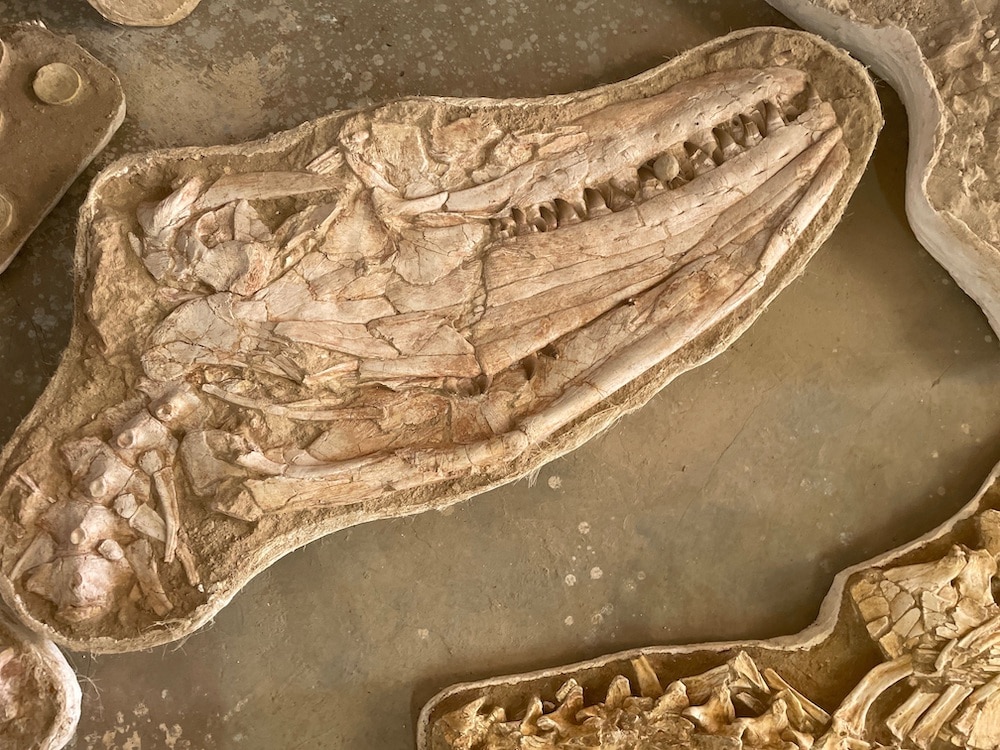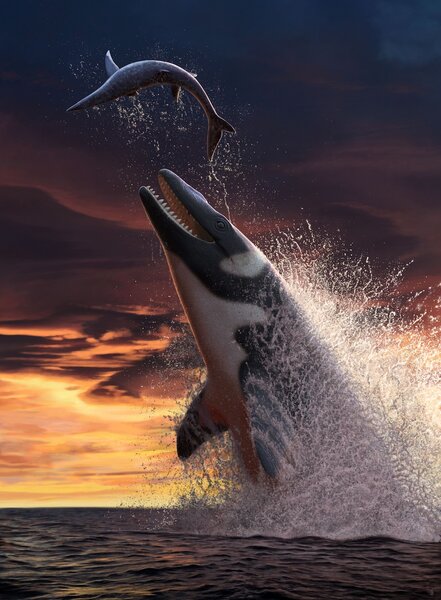Create a free profile to get unlimited access to exclusive videos, sweepstakes, and more!
Giant mosasaur ate everything in its path, then regurgitated the bones like an owl
Mosasaurs have terrible table manners.

In the 1999 crime thriller The Bone Collector, forensics experts are tasked with tracking down a serial killer who collects the bones of their victims. In some respects, paleontology is a lot like forensic science, tracking down various lines of evidence and looking at the state of the bones left behind — or the ones which are missing — in order to piece together the story of what happened in Earth’s distant past.
In many cases, the bones of an animal can tell us only about the animal itself. When we’re lucky, however, the collection of bones in an area can give us insight into the larger set of relationships at work in the past. Recently, Nicholas Longrich from the Department of Biology and Biochemistry at the University of Bath, and colleagues, came upon a unique set of bones which revealed not only a new species of mosasaur dubbed Thalassotitan atrox, but also revealed the ways in which they lived and hunted. The findings were published in the journal Cretaceous Research.
“There’s a phosphate mine in Morocco and in the process of mining, people started finding these mosasaurs out there. It’s an ancient marine deposit about 66 million years old and it’s incredibly productive. There’s a huge number of fossils out there,” Longrich told SYFY WIRE.
This new species is characterized by a head approximately 1.4 meters in length attached to a body which stretched 9 meters long, roughly the size of a modern killer whale. It’s likely Thalassotitan atrox filled the same ecological niche as a killer whale, preying on other large animals, and placing it at the very top of its food chain.
Despite their aquatic lifestyle, they’re most closely related to modern iguanas and monitor lizards, and might have had similar morphologies but with flippers instead of feet and large shark-like tails. A comparison of the fossilized bones with those of modern monitor lizards gives us some clues as to how they might have swallowed large prey.
“They’re adapted for feeding on really large prey. A Komodo dragon already has a wide head, and they can hinge their jaws out kind of like a snake. There’s a hinge in the middle of the mandible that lets them flex their jaw out to the side. Mosasaurs could also do that. They have the same jaw hinges and could have swallowed a human whole,” Longrich said.
Even still, it seems they weren’t satisfied with eating prey capable of fitting easily in their unhinged jaws. Looking at associated bones found near the mosasaur fossils suggests they also preyed on animals much larger than themselves, using their powerful jaws and puncturing teeth to shred them into bite-sized pieces.
Moreover, some of the nearby bones appeared to have acid damage, with some of the bones and teeth having been eaten away. Figuring out why that was, depended on piecing together bits of evidence gathered over Longrich’s paleontological career.
Years ago, Longrich was studying a small reptile fossil which lacked any teeth. A colleague suggested it looked like what is commonly found in owl pellets after they’ve digested their food and spat it back up. During digestion, some of the bones and teeth will be dissolved and would be missing in any fossil remains.
“I realized we were seeing the same thing. They were acid digested. We can’t say with 100% certainty the mosasaur did it, but if you’re the police and you find a bunch of bodies in the woods, and a mile away you have someone who fits the profile of a serial killer, they are the prime suspect,” Longrich said.
Included in the suite of partially digested bones, researchers found a plesiosaur skull. It’s likely that their mosasaur, or one like it, ripped the head off a plesiosaur, swallowed and digested it, and then regurgitated the bones. Interestingly, this isn’t something which has been described in mosasaurs before and could be indicative of a specialization in this species.
“I’ve never seen anything like it before. Sharks will occasionally vomit up remains but it’s not super common. Maybe it’s just hard to digest the bones and it’s easier to spit them up. It may be a particular digestive strategy this mosasaur evolved. Part of me is waiting for someone to come out and say this is wrong, but so far no one has,” Longrich said.
This process of indiscriminately eating everything in their path didn’t come without a cost. The mosasaur itself also had considerable tooth damage, probably the result of biting into turtle shells or the unforgiving bones of large animals. Many of the teeth were worn down to stubs or shattered. It seems if you’re a Cretaceous ocean-dwelling bone collector, you’re bound to lose a few bones yourself along the way. Turnabout is fair play.



























